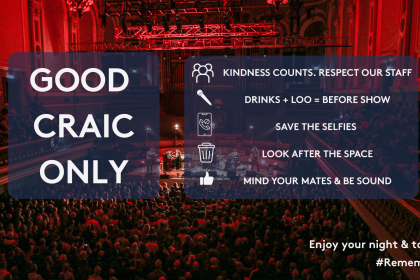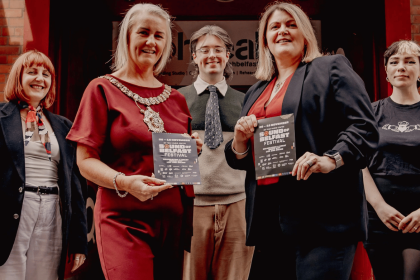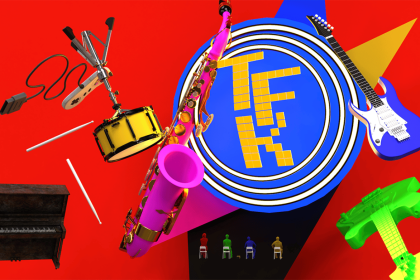The Ulster Hall has recently played host to two extraordinary performances to celebrate the Mid-Autumn Festival, an annual Chinese celebration that took place on 13 September.
A remarkable gift was bestowed upon the people of Belfast this September as the city was treated to two memorable events in celebration of the Mid-Autumn Festival. Audiences were blown away on 11 September as some of China’s greatest acrobats, plate spinners, opera singers and contortionists took to the stage to share their extraordinary talent. It was a feast for the eyes and anyone who was fortunate enough to get tickets was left mesmerised by these performers.
On 26 September, the city of Belfast was treated again to an exclusive performance from China’s very own ‘Pipa Queen’; a musician better known at Hongyan Zhang, who plays the ancient Chinese instrument, the Pipa. The Pipa is an instrument that has been played for almost two thousand years in China and Zhang has toured over 40 countries, performing in world-renowned venues such as Carnegie Hall, Sydney Opera House, Berlin Philharmonic Hall and Vienna Concert Hall. The Pipa Queen and her students gave the audience of Ulster Hall a glimpse of the sound of the Pipa; covering the traditional Chinese music and even learning a local favourite for Belfast, Danny Boy!
This is a festival that has been celebrated in China for over three thousand years and 2019 is further celebrated as it is the 70th Anniversary of the founding of the People’s Republic of China. The celebrations around the Mid-Autumn Festival fascinated us all and to find out more, we reached out to one of the organisers of these fantastic events, the General Consul of China, to find out more about the history and how it is celebrated in China.
When is the Mid-Autumn Festival?
The Mid-Autumn Festival is a harvest festival which is held on the 15th day of the 8th month of the Lunar calendar, meaning there will be a full moon that night. The day is also known as the Moon Festival as at that time of the year the moon is at its roundest and brightest.
In western countries, we operate off a Gregorian calendar and this date would translate to mid-September or early-October. In 2019, the Mid-Autumn Festival fell on 13 September.
What is the origin of the Mid-Autumn Festival?
The Chinese have celebrated the harvest during the autumn full moon since the Shang dynasty, that is three thousand years ago (c. 1600–1046 BCE). There are many legends as to the origin of the festival but Chang E Flying to the Moon is the most widely told Mid-Autumn Festival legend.
It is said that in ancient times, ten suns existed in the sky and the extreme heat made people’s lives very difficult. It was the hero Hou Yi, who, owing to his great strength, shot down nine of the ten suns. Later, Hou Yi married a beautiful and kind-hearted woman named Chang E and lived a happy life.
One day, the Queen of Heaven presented Hou Yi with an elixir which would help him to ascend immediately to heaven and become a God. Hou Yi took it home and asked Chang E to keep it. Unfortunately, a villain named Pengmeng heard of this elixir and broke into their home while Hou Yi was out hunting, demanding Chang E hand over the elixir. In a moment of desperation, Chang E swallowed the elixir.
Reluctant to leave her husband, Chang E tried her best to fly to the nearest place to the earth on the heaven, which is the moon. As years went on, Hou Yi missed Chang E deeply and so he placed Chang E’s favourite foods on tables on full moon day.
This custom was later followed by folk people praying for good luck from Goddess Chang E which gradually formed the Mid-Autumn Festival.
How is the Mid-Autumn Festival celebrated in China?
The Mid-Autumn Festival is largely centred around family and friends. Similar to the American Thanksgiving, the festival is seen as an opportunity for reunion and a day to give thanks; it is said the moon is the brightest and roundest on this day which represents family reunion.
A prominent part of the celebrations is the carrying of brightly lit lanterns, lighting lanterns on towers, or floating sky lanterns. Families join with their own lanterns or simply come out to watch the beauty of the flying lanterns.
A typical treat that is eaten on this day are mooncakes; a dense, sweet pastry that’s baked or steamed and typically enjoyed with tea. While the majority of mooncakes are filled with lotus paste and salted egg yolk, more adventurous flavours have made their way into practice such as green tea and chocolate…last year, Guinness even released its own flavour!











